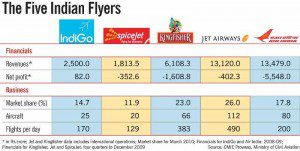A few weeks back, I’d mentioned Tac Anderson’s ‘3 types of social media strategy‘ . To quickly summarise, the first is the ‘toe-in-the-water’ approach (not really a strategy), the second is ‘optimising social media for business’ and the third is ‘optimising business for social media’. That happens to be the decreasing order in terms of current practices, probably because its also the increasing order, in terms of thought, effort and time required.
I am quite a fan of the third approach and saw this excellent presentation by David Cushman, a few days back, which showed why ‘optimising business for social media’ is perhaps the best way in the long run. In fact, it does it in such a way that it almost seems like an afterthought. On the way, it addresses the much maligned combination of words – ‘social’ and ‘media’, and the subject of ROI.
Like I said, I don’t require any convincing on the third approach too, but the more I interact with clients, I begin to understand that with all the hype, the expectations of social media are akin to the other forms of media, and the stereotyped Facebook page and Twitter account are much sought after in the strategy presentation. And that forces me to think whether we can start with approach 2, and move towards approach 3. The feedback from open social channels slowly creating a change within the organisation and making it view everything with a different perspective. That’s quite a change from asking for perfect products and services which could ‘withstand’ social media. 🙂
Meanwhile, I looked at it from another perspective when I chanced upon the new IndiGo Airlines ad, thanks to a post by L.Bhat. The spunky ad, which you can view here, is shot extremely well and showcases IndiGo’s dedication to being on time. Bhat raised a valid point that this punctuality might actually be beyond their control, in some cases. I completely agree, but like I commented, I’ve used IndiGo several times, and have never had a reason to complain. All the people who’ve commented on YouTube seem to agree.
I have to confess, there’s a style to Indigo that I’m quite a fan of. Right from the way they have communicated this data below (do note the revenues, number of flights, market share, and compare) inside the flight, to the menu items to their stickers and even their barf bag, they are quite unique, they have an attitude and are not afraid to show it.Check this out. (thanks @gkjohn)

(Source: Outlook)


(Can’t remember other airlines, I know Spicejet has quite plain stuff, anyway I liked these enough to keep a copy 😀 )
No, i wasn’t digressing. From what I read, IndiGo is hardly a major player in the social media space. But I think the TVC is a good way of approaching what would have been ‘strategy 2’, with a conscious design of reaching strategy 3. All that, without social media. A purely communication (internal and external)+ organisational culture based approach to creating a social business. That may not be Indigo’s strategic intent, but it does make me think. Is it possible? 🙂
What can be done to this with social media, is a different discussion altogether.
until next time, thoughts in the air
Bonus: “Culture eats strategy for lunch” via Gautam Ghosh.
httpv://www.youtube.com/watch?v=kiFMJfrCO_0

Leave a Reply